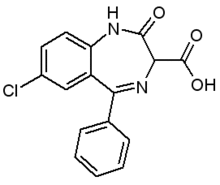Mile per mile, the rate of car accidents among older
folks is twice as high as that for middle-age drivers
and is outpaced only by the rate of the under-25
crowd. Slowed reaction times, joint impairment,
and visual disturbances are often to blame. But a
new study highlights an oft-overlooked hazard: driving
while taking benzodiazepines, a class of medications
used to treat insomnia and anxiety.
When researchers at McGill University in Montreal
examined the driving records of nearly 225,000
people aged 67-84, they found a 45% increase in the
rate of injury causing car accidents among drivers
who had begun taking benzodiazepines a week
earlier. During this time, people are getting used to
such side effects as drowsiness and impaired reflexes
and motor skills. The accident rate remained 26%
higher even for those who had taken benzodiazepines
for as long as a year, compared with their
peers who were not on the medications.
Clonazepam (Klonopin), diazepam (Valium),
clorazepate (Tranxene), chlordiazepoxide
(Libritabs), and flurazepam (Dalmane) were
all associated with elevated accident rates. These
long-lasting drugs tend to stay in the bloodstream
and exert their effects for more than 24 hours.
Short-acting benzodiazepines, on the other hand,
usually wear off more quickly. These include alprazolam
(Xanax), lorazepam (Ativan), and triazolam
(Halcion).
Older people who regularly take long-acting
benzodiazepines may want to talk with a doctor
about switching to short-acting varieties, particularly
if the drug is being used to treat insomnia.
Those who take a short-acting form to treat anxiety
during waking hours, however, should also
exercise caution when getting behind the
wheel. The effects of this type are usually most
intense the first few hours after it is taken.
Finally, long-acting benzodiazepine users should
not alter their drug regimen without consulting a
doctor. Many of the medications are addictive, and
sudden withdrawal can lead to seizures or severe
anxiety attacks. (Journal of the American
Medical Association, July 2, 1997, pp. 27-31.)
COPYRIGHT 1997 Copyright by President and Fellows of Harvard College. All Rights Reserved
COPYRIGHT 2004 Gale Group



